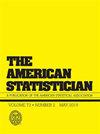The Loser’s Curse and the Critical Role of the Utility Function
IF 2.1
4区 数学
Q1 STATISTICS & PROBABILITY
引用次数: 0
Abstract
A longstanding question in the judgment and decision making literature is whether experts, even in high-stakes environments, exhibit the same cognitive biases observed in controlled experiments with inexperienced participants. Massey and Thaler (2013) claim to have found an example of bias and irrationality in expert decision making: general managers’ behavior in the National Football League draft pick trade market. They argue that general managers systematically overvalue top draft picks, which generate less surplus value on average than later first-round picks, a phenomenon known as the loser’s curse. Their conclusion hinges on the assumption that general managers should use expected surplus value as their utility function for evaluating draft picks. This assumption, however, is neither explicitly justified nor necessarily aligned with the strategic complexities of constructing a National Football League roster. In this paper, we challenge their framework by considering alternative utility functions, particularly those that emphasize the acquisition of transformational players––those capable of dramatically increasing a team’s chances of winning the Super Bowl. Under a decision rule that prioritizes the probability of acquiring elite players, which we construct from a novel Bayesian hierarchical Beta regression model, general managers’ draft trade behavior appears rational rather than systematically flawed. More broadly, our findings highlight the critical role of carefully specifying a utility function when evaluating the quality of decisions.失败者的诅咒与效用函数的关键作用
判断和决策文献中一个长期存在的问题是,即使在高风险环境中,专家是否会表现出与没有经验的参与者在对照实验中观察到的相同的认知偏见。Massey和Thaler(2013)声称发现了专家决策中的偏见和非理性的一个例子:国家橄榄球联盟选秀权交易市场中的总经理行为。他们认为,总经理们系统性地高估了状元选秀权,这些状元选秀权产生的剩余价值平均低于后来的首轮选秀权,这种现象被称为“失败者的诅咒”。他们的结论基于这样一个假设:总经理应该使用预期剩余价值作为评估选秀权的效用函数。然而,这种假设既没有明确的理由,也不一定符合构建国家橄榄球联盟名单的战略复杂性。在本文中,我们通过考虑替代效用函数来挑战他们的框架,特别是那些强调获得变革性球员的函数——那些能够显著增加球队赢得超级碗机会的球员。我们从一个新的贝叶斯分层Beta回归模型中构建了一个优先考虑获得精英球员概率的决策规则,在这个规则下,总经理的选秀交易行为似乎是理性的,而不是系统性的缺陷。更广泛地说,我们的发现强调了在评估决策质量时仔细指定效用函数的关键作用。
本文章由计算机程序翻译,如有差异,请以英文原文为准。
求助全文
约1分钟内获得全文
求助全文
来源期刊

American Statistician
数学-统计学与概率论
CiteScore
3.50
自引率
5.60%
发文量
64
审稿时长
>12 weeks
期刊介绍:
Are you looking for general-interest articles about current national and international statistical problems and programs; interesting and fun articles of a general nature about statistics and its applications; or the teaching of statistics? Then you are looking for The American Statistician (TAS), published quarterly by the American Statistical Association. TAS contains timely articles organized into the following sections: Statistical Practice, General, Teacher''s Corner, History Corner, Interdisciplinary, Statistical Computing and Graphics, Reviews of Books and Teaching Materials, and Letters to the Editor.
 求助内容:
求助内容: 应助结果提醒方式:
应助结果提醒方式:


